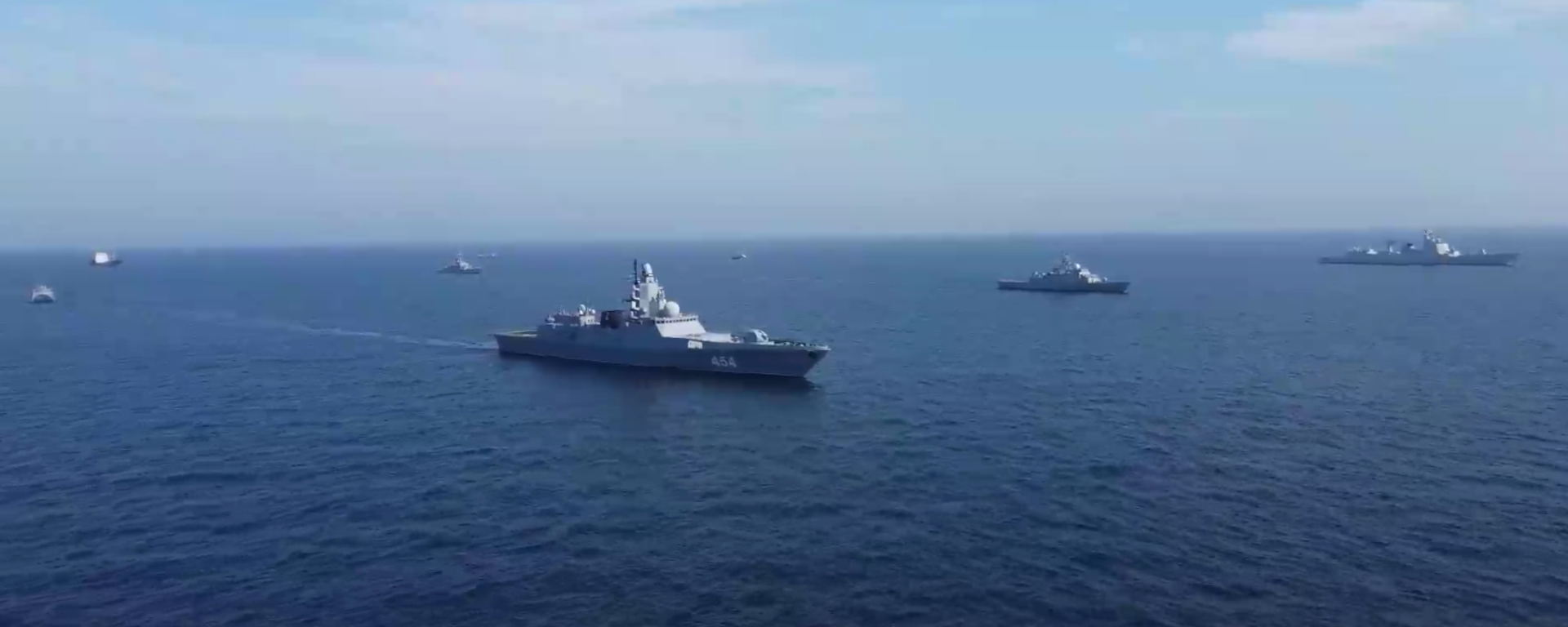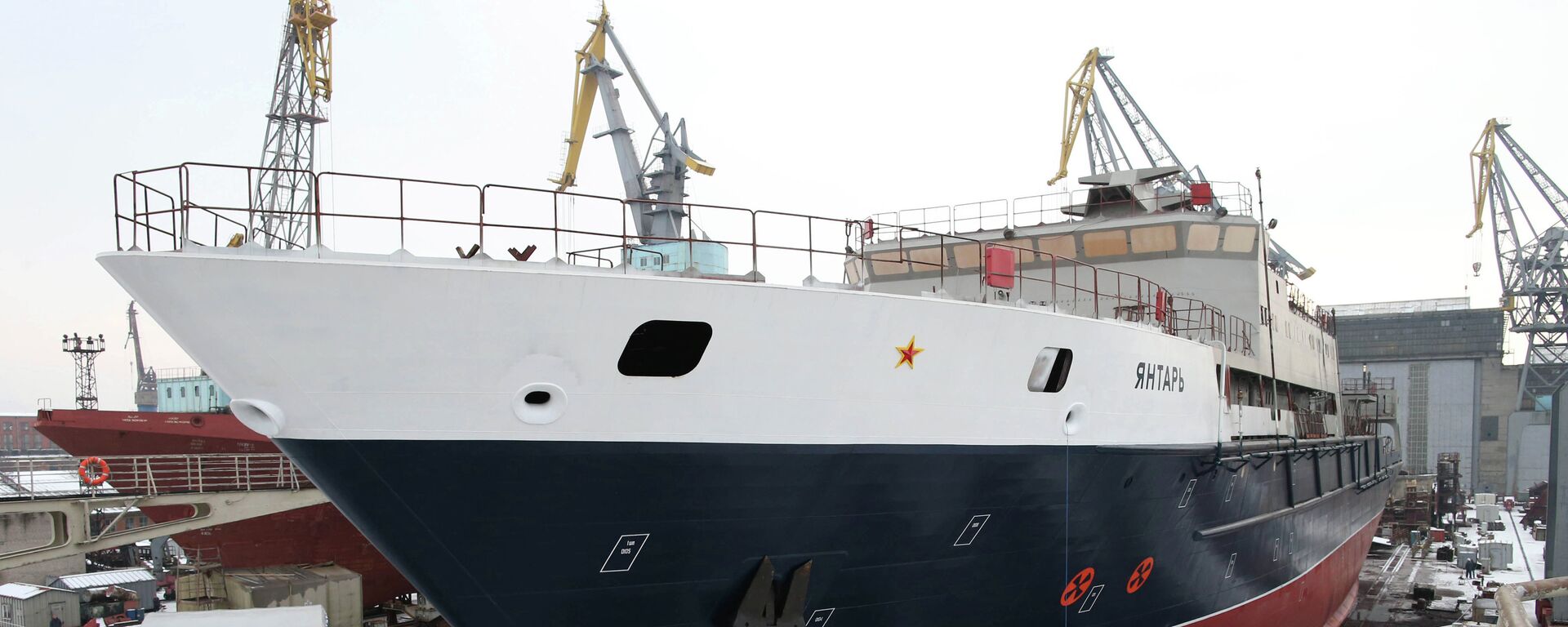China Doubles Number of Ports, Pawing Maritime Silk Road for Global Trade

© AP Photo / Andy Wong
Subscribe
Beijing's maritime strategy, which is backed by significant port investments, cements its global trade dominance, extending its influence to key shipping lanes. This strategic network, part of the Belt and Road Initiative, spans the Indian Ocean to Europe.
China's investment in port infrastructure, while primarily commercial, has also cemented its role as a central figure in international maritime trade and navigation. With the vision of consolidating its commercial prowess, Beijing has organized a network of ports under its management, strategically spanning the Indian Ocean through the Middle East's critical zones, Africa, and Europe.
Initially, China's reach extended to 44 ports worldwide, setting the stage for its maritime ambitions. Over the past decade, this influence has grown to involve port operations in more than 100 locations across 50+ countries.
These strategic investments have been predominantly driven by state-owned Chinese companies, placing them at the helm of these pivotal maritime hubs.
Historical Development
President Xi Jinping's launch of the maritime component (Maritime Silk Road) of the Belt and Road Initiative (BRI) in 2013 marked a pivotal step in China's quest to expand its global market reach.
This came at a time when the Asian giant overtook the United States as the world's largest trading nation. Moreover, it laid a strategic blueprint for a trade network connecting China's shores with the rest of the world.
What is China’s Maritime Silk Road?
MSR represents the overarching strategy for integrated logistics coordination across various modes of transport, linking the start of the supply chain in Chinese manufacturing hubs to end-user destinations worldwide.
It involves the harmonious administration of maritime gateways, freight handling hubs, inventory control, customs enforcement and oversight, risk assurance, the primary transit of products, etc., (particularly employing container liners connected with terrestrial freight solutions).
Maritime Routes and Key Ports & Terminals
Over the last decade, China has strategically bolstered its shipping capabilities by consolidating both state-owned and private companies. This effort extends from its domestic ports to an international expansion strategy involving the acquisition of strategic port and terminal operators, effectively forming a connection of terminals along the route connecting China to major global maritime routes.
The Indian Ocean is a critical shipping corridor connecting Asia with the West. Hence, Beijing is investing in two Sri Lankan ports which sit in the heart of this ocean, as 80% of its trade, including crucial oil imports, traverses this area.
Port of Hambantota - a public-private partnership between the Sri Lankan government and China Merchants Port Holdings. It offers the most diversified range of services in the port and maritime industry in Sri Lanka. China invested in this port and notably obtained a 99-year lease to run it.
Colombo Port - primarily a container port - was built based on build-operate transfer by Colombo International Container Terminals Limited (CICT), a joint venture company of China Merchants Port Holdings and SLPA.
The Persian Gulf is likewise of strategic importance to China for its oil and gas, essential for China's economic expansion and energy security. The region is a key maritime conduit for global energy trade, especially through the crucial Strait of Hormuz.
China has bolstered its Middle Eastern maritime footprint by operating a new container terminal at Khalifa port via China Ocean Shipping Company, Limited (COSCO).
However, through Hutchison Ports Sohar - owned by Hutchison Ports Holdings of China, it manages Sohar Port's container terminal in Oman, reflecting a blend of Chinese, Omani, and international investment under a long-term concession.
Hutchison Ports commenced operations at Saqr Port's terminal in Ras Al Khaimah, UAE, as part of a 25-year concession agreement. China Merchants Port Holdings also possess a significant stake in Umm Qasr port terminal, Iraq.
The Red Sea and Suez Canal play a vital role in the BRI's Maritime Silk Road component, allowing China to access markets in Europe, the Mediterranean, and North Africa more efficiently.
According to official data, China Merchants Port's substantial investment of 23.5 percent in Djibouti Port Co., Ltd. in 2013 paved the way to start the Multi-Function Dock Project at Multiple Halley in 2014. By May 2017, this project had become fully operational. Djibouti, positioned on the western bank of the Gulf of Aden, holds strategic importance as it also serves Ethiopia.
Hutchison Ports and the Saudi Jazan City for Primary and Downstream Industries (JCPDI) signed an agreement in February 2021 to invest and operate the JCPDI port, per official documents.
In January 2021, Saudi Arabia's Public Investment Fund and Cosco Shipping acquired a stake in Red Sea Gateway Terminal’s operator, DP World, valuing the port operator at approximately $880 million.
In March 2023, Hutchison Ports announced an investment of $700 million in Egypt, focusing on Ain Sokhna Port (Egypt's biggest port) and a new container terminal, B100, at the Port of Alexandria. This adds up to a total investment of over $1.5 billion in Egypt by the Chinese global port investor. The company also holds significant investments in Egypt's Abu Qir and El Dekhelia ports.
The Mediterranean maritime route is vital for China due to its direct access to European and North African markets, support for the Belt and Road Initiative (BRI), and trade diversification benefits.
Cosco Shipping owns over half of Noatum Ports in Spain and has a stake in Malta's Marsaxlokk port. Shanghai International Port Group operates Haifa's Bay Port, and two other Chinese firms are constructing Cherchell port in Algeria. Together, Cosco and China Merchants Port Holdings have stakes in a total of seven Mediterranean ports.
Media reports have indicated that as of August 2023, Chinese companies have invested in 31 container terminals across Europe and the Mediterranean. Among these, Chinese state-owned enterprises have full or majority control of two ports: Piraeus in Greece and Zeebrugge in Belgium. Cosco owns 90% of CSP Zeebrugge and has substantial ownership of Piraeus, including 100 percent of terminals 1 and 2, and a 67 percent share of the Piraeus Port Authority.
The Economic Importance of China's Maritime Silk Road
1.
Trade facilitation enhances China's maritime trade routes and its connectivity with other countries, reducing transportation costs and transit times. This expedites the flow of goods and services, boosting international trade and economic growth.2.
Economic cooperation: Through the BRI, Beijing cooperates with partner countries, promoting investment, joint ventures, and economic development. This collaboration can lead to increased mutual trade and investment opportunities.3.
Industrial capacity cooperation: The initiative fosters cooperation in various sectors, including manufacturing, infrastructure development, and technology transfer. This can help countries along the Maritime Silk Road upgrade their industries and promote economic diversification.4.
Financial integration: As big creditor to major economies, it has established financial institutions like the Asian Infrastructure Investment Bank (AIIB) to support infrastructure financing in BRI countries. This financial integration promotes economic development by funding projects that may otherwise be financially challenging for host countries, especially in the Global South.Market Share of Chinese Port Investment Companies
Some media outlets have reported that the American Enterprise Institute and Heritage Foundation's China Global Investment Tracker records over 100 investments in the shipping subsector by Chinese firms, amounting to around $2 trillion. These investments span globally and are focused along China's main trading routes and strategic locations across the globe.
A third of the world's top 50 container ports have received investments from China. Notably, Hutchinson Port Holdings, COSCO Shipping Ports, and China Merchant Ports Holding are among the top port operators globally, with a presence in numerous countries and control over substantial cargo throughout.




